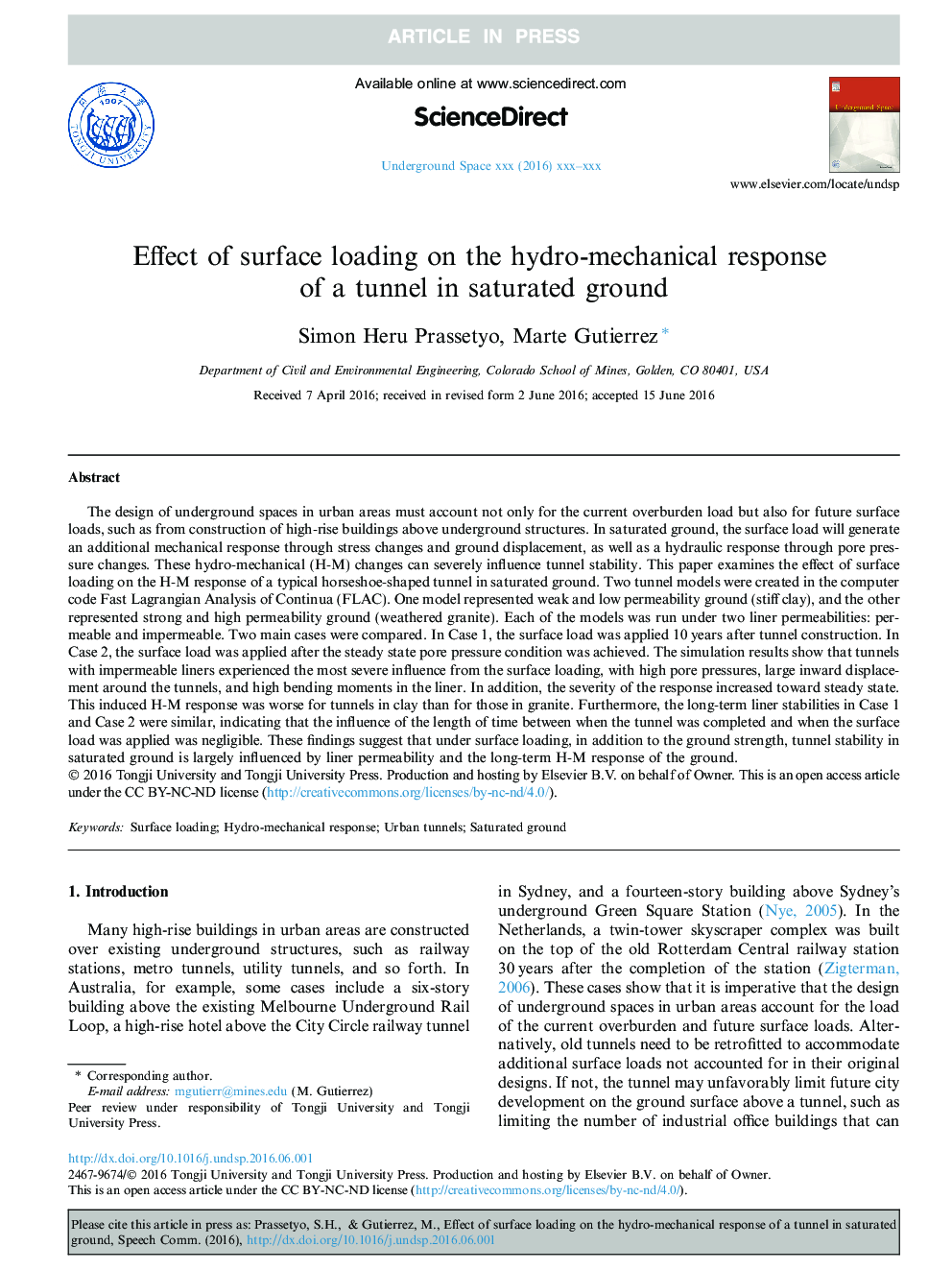| Article ID | Journal | Published Year | Pages | File Type |
|---|---|---|---|---|
| 6784415 | Underground Space | 2016 | 19 Pages |
Abstract
The design of underground spaces in urban areas must account not only for the current overburden load but also for future surface loads, such as from construction of high-rise buildings above underground structures. In saturated ground, the surface load will generate an additional mechanical response through stress changes and ground displacement, as well as a hydraulic response through pore pressure changes. These hydro-mechanical (H-M) changes can severely influence tunnel stability. This paper examines the effect of surface loading on the H-M response of a typical horseshoe-shaped tunnel in saturated ground. Two tunnel models were created in the computer code Fast Lagrangian Analysis of Continua (FLAC). One model represented weak and low permeability ground (stiff clay), and the other represented strong and high permeability ground (weathered granite). Each of the models was run under two liner permeabilities: permeable and impermeable. Two main cases were compared. In Case 1, the surface load was applied 10Â years after tunnel construction. In Case 2, the surface load was applied after the steady state pore pressure condition was achieved. The simulation results show that tunnels with impermeable liners experienced the most severe influence from the surface loading, with high pore pressures, large inward displacement around the tunnels, and high bending moments in the liner. In addition, the severity of the response increased toward steady state. This induced H-M response was worse for tunnels in clay than for those in granite. Furthermore, the long-term liner stabilities in Case 1 and Case 2 were similar, indicating that the influence of the length of time between when the tunnel was completed and when the surface load was applied was negligible. These findings suggest that under surface loading, in addition to the ground strength, tunnel stability in saturated ground is largely influenced by liner permeability and the long-term H-M response of the ground.
Keywords
Related Topics
Physical Sciences and Engineering
Earth and Planetary Sciences
Geotechnical Engineering and Engineering Geology
Authors
Simon Heru Prassetyo, Marte Gutierrez,
